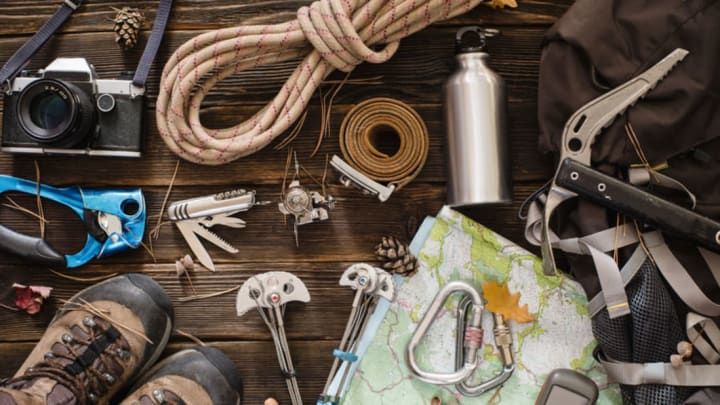Scientists say that the Yeti is just a legend—but that hasn’t stopped adventurous cryptozoologists from jetting off to the Himalayan Mountain region in search of the beast, which has been described as a gigantic humanoid covered in shaggy fur. If you’re looking to join them, here’s some equipment you will need to stash in your rucksack before booking a plane ticket to Asia.
1. A TORCH
The Yeti is reportedly unafraid of weapons, but a torch will keep him at bay. (Plus, many people believe the creature to be peaceful, so you want to avoid hurting him unless proven otherwise.) It’s also handy to have an additional light source on hand during an outdoor expedition—especially one that keeps you warm while hiking the snowy peaks bordering Nepal, India, and Tibet.
2. A CAMERA TRAP
The Sherpa people say that the Yeti will only show itself to those who believe in its existence. If you’re still on the fence (or simply want to capture it lumbering unaware through its natural habitat), bring along a camera trap—a remotely activated camera that’s activated by infrared sensor when it detects body heat or movement. Scientists hide them in remote areas to obtain videos and pictures of rare species. Simply leave the camera trap outside, wait a few days (or even weeks), and review the footage. If you spot a muscular, 6-foot-tall creature covered in dark grey or reddish-brown hair, congratulations! You’ve spotted the Yeti—or discovered a new bear species.
3. FOOD (FOR BOTH YOU AND THE YETI)
The Nepalese believe that Yetis eat yaks or sheep, so the creature might be lured to your campsite if you leave out some meat. And since you’ll be burning plenty of calories while trekking through the snow, make sure to pack hearty nonperishables like energy bars, trail mix, dried fruit, nuts, and cheese. And don’t forget sports drinks, which will replenish your energy levels with minerals and electrolytes.
4. MEASURING TAPE
Throughout the decades, several explorers claim to have spotted mysterious sets of footprints that appeared to have been made by an ape-like creature. If you encounter any tracks in the snow, whip out a measuring tape and record their size. If they’re anywhere between 12 and 14 inches long, they could be the Yeti’s.
5. SPELUNKING GEAR
Many people believe that the Yeti spends time in mountain caves. If you’re going to engage in an impromptu spelunking adventure, be sure to stay safe by packing a helmet with a headlamp, along with other forms of protection.
6. A TENT
According to Nepalese folklore, the Yeti is nocturnal, which means you’re not going to spot him sitting top of a mountain, basking in a sunbeam mid-day. Your best bet is to camp out and search for him at night. Pack a mountaineering tent (also known as a"4-season tent") to shield you from altitude chill, as well as a zero-degree down sleeping bag, as temperatures can dip well below zero after dark.
7. AN OFFICIAL GOVERNMENT PERMIT
The rules may be slightly different today, but during the late 1950s, American diplomats in Kathmandu took rumors about the Yeti seriously enough to issue official regulations for its capture. (They were likely also looking to make easy money off hunters.) If you wanted to pursue the mythical beast, you had to pay the Nepalese government $77 for a permit. You were also prohibited from killing any Yetis (although exceptions were made for instances of self defense). Photographs were fine, but all images—and captured ape-men—had to be handed over to Nepali officials. Finally, you were not allowed to alert the media about your discovery. So before you go off searching for the Yeti, make sure to check in with national government figures to see if you need to buy a license or fill out any permission-granting paperwork.
Join the search for the Yeti with host Josh Gates on Expedition Unknown: Hunt for the Yeti, tonight at 9/8c only on Travel Channel.
